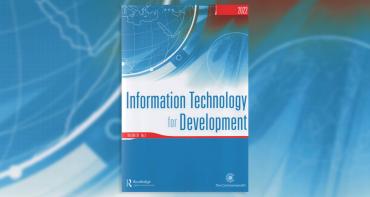Artisanal fisheries[1] are an important food source with fish constituting an important source of protein and income by providing employment to millions of people in countries where food security is an issue.

Blog by Benjamin Kwasi Addom, Adviser on Agriculture and Fisheries Trade Policy, The Commonwealth Connectivity Agenda
The sector is the economic backbone of most coastal communities. It represents an important socio-economic and cultural aspect of coastal communities across the Commonwealth, and the impact on coastal reefs and other marine lives may be significant.
At the 2009 Commonwealth Heads of Governments Meeting (CHOGM) in Trinidad and Tobago, Heads acknowledged that the sustainable harvesting of the world's fish stocks supports food security and can have long-term economic benefits and agreed that urgent action was needed to strengthen fisheries and marine management in member states waters, particularly in the case of the more vulnerable member states.
Unfortunately, the sector is highly vulnerable to natural and man-made shocks including climate change, storms that might damage fishing vessels, pollution, and overfishing thereby causing catches to decrease. On the other hand, fishing is one of the most dangerous jobs in the world, with high mortality and accident rates.
The big question is what can digitalisation do to transform artisanal fisheries into a profession that can attract the youth?
The timely release of The State of Digital Fisheries in the Commonwealth – A Baseline Report 2023 responds to this question by showing how digitalisation of the fisheries sector is already underway across the Commonwealth. The Policy Guide argues that whether digitalisation fulfils its promise, or it becomes just another technological hype for development, depends on our approach to its deployment, especially for the most vulnerable communities and dangerous professions.
The report recognises that to meet the global food systems transformation agenda by the United Nations and the ongoing country-level processes and pathways, new and frontier innovations must be at the forefront. Digitalisation is one of the key frontier innovations. But it takes more than innovations to see results for people. It is more about the process of delivering the innovations. Hence this policy guide shares experiences from across the Commonwealth and beyond.
Framing digitalisation for fisheries
The report takes a policy approach to digitalisation as against the conventional focus on profiling digital technologies and services for fisheries. A critical contribution of the report is the framing of digital fisheries beyond digital technologies and services. The results in each region were based on an assessment using the “digital fisheries framework” developed by the Secretariat in collaboration with other partners, which consists of three pillars and a base - pillar 1 (digital innovations), pillar 2 (data infrastructure), pillar 3 (business development), and the base (enabling environment) (see figure).
The framework lays a foundation for understanding the state of digital fisheries in the Commonwealth, provides a basis for future country-level assessments, presents an outline for developing a universal index for monitoring the deployment of digitalisation within the sector, as well as supporting the national digital fisheries strategies development process.
A high-level digital fisheries landscape across the Commonwealth through the lens of the framework:
Commonwealth Africa:
- Automatic Identification Systems (AIS) and vessel monitoring systems (VMS) to collate data and track the fishing footprint of individual vessels as well as digital payment solutions are widely used across the region.
- Unfortunately, the absence of coordinated data infrastructure means poor maritime surveillance and failure to monitor illegal, unreported, and unregulated (IUU) activities.
Commonwealth Asia:
- Donor-driven approach to the development of new innovations dominates the region with less entrepreneurship in fisheries digitalisation.
- The enabling environments for digitalisation vary across the region with the main hurdle being network connectivity for the use of mobile devices.
Commonwealth Caribbean and Americas:
- The use of digital innovations is low in the Caribbean with fishers mainly relying on basic digital solutions and services such as voice calls, WhatsApp messaging and Microsoft Word and Excel for data collection and storage.
- Through the Fisheries and Oceans Canada (DFO), Canada has made significant progress with infrastructure for fisheries-related data, but fisheries data is still somewhat lacking.
Commonwealth Pacific:
- In general, accessibility and knowledge of digital technologies within the region is considered “good”, but progress is disjointed with several pilots and initiatives.
- The Pacific region’s data infrastructure is underdeveloped and fragmented at the national level with lots of issues managing the large amounts of fisheries data collected by governments.
Commonwealth Europe:
- While the uptake of digital innovations within the UK’s fisheries is slow, the Mediterranean’s fisheries have little technology or research and development currently happening within the sector.
- The United Kingdom has one of the most promising enabling environments in the Commonwealth with good infrastructure, educational levels and data collection.

The way forward
The transformation of artisanal fisheries within the Commonwealth is central to the cultural and economic well-being of people. Digitalisation has the potential to positively impact this transformation process. The report and the underlying framework are the starting point for enabling Commonwealth member countries and regions to fully exploit the new digital innovations. And the Commonwealth Connectivity Agenda for Trade and Investment is designed to support member states in creating that policy-enabling environment for the digitalisation of the sector so that it attracts the investment needed to support the goal of increased food security.
[1] Can be subsistence or commercial and involves the use of relatively low-level technologies such as small canoes or boats instead of larger, more powerful vessels; no engines or very simple low-power engines; and traditional fishing gear such as spears or hand reels.
Read: State of Digital Fisheries in the Commonwealth – A Baseline Report 2023
About Commonwealth Connectivity Agenda
Media contact
- Rena Gashumba Communications Adviser, Communications Division, Commonwealth Secretariat
- T: +44 7483 919 968 | E-mail



